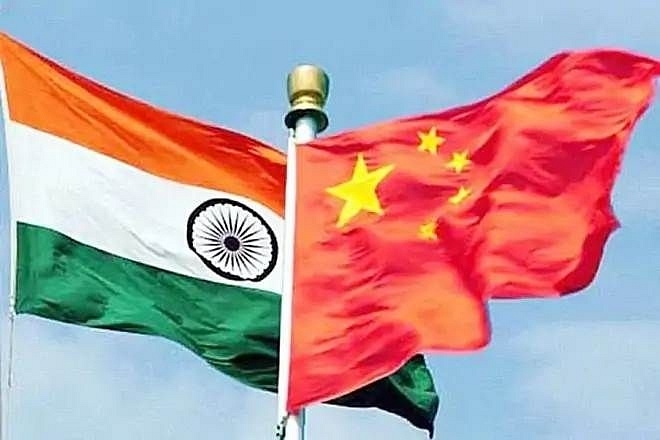Insta
After Agreement On Pangong Lake Area, India To Raise Depsang Issue With China At Next Military-Level Talks

The flags of India and China.
After reaching an agreement with China on disengagement on North and South banks of the Pangong Tso in Ladakh, India is now set to raise the issue of the strategically-located Depsang area in the next round of military-level talks, reports Times of India.
Defence Minister Rajnath Singh on Thursday (11 February) had said that after completing the disengagement of the troops in the Pangong lake area, India and China have agreed to convene next meeting of their senior commanders to "address and resolve all other remaining issues".
According to the officials, India is likely to take up disengagement at the Depsang plains as well as other places like Gogra-Hotsprings and Charning Ninglung Nallah (CNN) in the subsequent round of talks.
The Chinese People's Liberation Army (PLA) in 2013 had done a deep incursion in Depsang area. However, there was no major flare-up in Depsang last year despite friction between two Armies at Pangong Tso, Galwan and other points, a senior official was quoted as saying.
"So, it was decided that Depsang would be dealt with separately from last year’s flashpoints,” he added.
However, it should be noted that PLA since April-May last year had been blocking Indian troops from even going to their traditional patrolling points - 10, 11, 12, 12A and 13 - in Depsang.
Depsang is strategically important for both countries. It provides India access to Daulat Beg Oldie (DBO) airstrip and the critical Karakoram pass in the north. The area also falls near the critical Western Highway G-219, which connects Tibet to Xinjiang.
Both Indian and Chinese Armies have deployed additional infantry brigades and tank regiments in the Depsang region after tensions erupted in eastern Ladakh last year.
“PLA picks up the movement of our patrols through sensors and other means to block them from going beyond the `Bottleneck’ or `Y-junction’ area in Depsang (around 18-km inside what India perceives to be its territory),” a source was quoted in the report as saying.
Meanwhile, some in the security establishment argue that India should have linked its tactically-advantageous heights gained in August in Pangong Tso-Kailash range for pushing China to extract concessions in the Depsang area.
“There is the distinct possibility that China will not budge from it stand on Depsang unless India has more cards to play. India’s vital Sub-Sector North (SSN), which includes Depsang and the DBO airstrip, is quite near China’s critical Western Highway G-219, which connects Tibet to Xinjiang,” another official was quoted as saying.
Introducing ElectionsHQ + 50 Ground Reports Project
The 2024 elections might seem easy to guess, but there are some important questions that shouldn't be missed.
Do freebies still sway voters? Do people prioritise infrastructure when voting? How will Punjab vote?
The answers to these questions provide great insights into where we, as a country, are headed in the years to come.
Swarajya is starting a project with an aim to do 50 solid ground stories and a smart commentary service on WhatsApp, a one-of-a-kind. We'd love your support during this election season.
Click below to contribute.
Latest